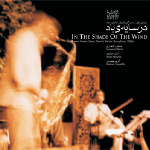
Songs
- artist:Massoud Shaari & Hamsaz Ensemble
- featured artist:Massoud Shaari
- release year:2007
- style(s):Fusion, Persian
- country:Iran
- formats:Audio File / Digital, CD (Compact Disc)
- record posted by:Barbad Music Inc.
- label:Barbad Music Inc.
- publisher:Barbad Music Inc.
In the year 1127, the artist {Abbot Suger} began reconstructing his Abbey Basilica of St. Denis in Paris. Suger's architectural ideas resulted in something never seen before, a "new look" neither classically Greek nor Roman or Romanesque. Eventually Suger's pioneer work led to an influential architectural style known as "gothic." Not knowing what to call Suger's work at the time, the society relied on a Latin name, "opus modernum." Today in the 21st century, in the context of Iranian society, {Masoud Shaari}'s interpretation of the ancient Persian Radiff allows for an "opus modernum" manifestation to occur in Persian classical music. His ground-breaking work, In the Shade of the Wind, intertwines the ancient with the modern age, marrying instruments such as setar to electric guitar, ney to saxophone. Each of the four tracks in this album are a journey to distant lands, where one can imagine Persian merchants offering the world their melodies and rhythms in exchange for nothing else but a sense of mutual understanding.
Shaari has unlocked the dusty box of the Radiff, letting ancient Iranian melodies play catch with the world. In 1978, the band ANCIENT FUTURE was the first ever to coin the term "world fusion music," defining their new style. Shaari’s album In the Shade of the Wind can fall under this category of music as well, where many cultures and sub-cultural musical styles are audibly interacting: classical North Hindustani rhythms and ragas are incorporated, 1950’s American pop-rock comes in and out of improvisatory segments, American Blue-Grass Country guitar is surprising to hear at times, jazz chord progressions harmonize in the background of a massive setar chorus, and psychedelic trance movements create an atmosphere close to that of the Sufi sama' ecstasy. Many of the trance-like sections in Shaari’s music is seriously influenced by the repetitiveness of Indian music and rock music. Through this conglomeration of musical styles and the process of fusion, Shaari unknowingly creates a new musical language that is nevertheless rooted in a Persian accent. The Radiff is still holds amidst the chaos of this fusion, exhibiting to the Western listener a sense of tradition. To Iranians, Masoud Shaari re-energizes the setar, revamping a tradition to adapt and still remain capable and applicable in the 21st century. The new generation of post-modern intellectuals is a movement towards globalization, and in Iran we are beginning to see this global influence in their music.
It must also be mentioned that other artists in Tehran are exhibiting the same ideological tendencies. A musician like {Mohsen Namjoo} has remained loyal to the emotional spirit within the Radiff, while creatively uplifting their Iranian musical heritage. In the case of In the Shade of the Wind, Shaari bears the weight of his artistic creation on developing the mastery of the Iranian setar. For example, in track one, "Hamsaz," one can not only hear but feel the many different new techniques Shaari has incorporated in his style of playing. Besides technique, his melody in the Nava modality still abides by bare structural laws of the Radiff, but the actual melody is something unheard of. This compromise between abiding by the structure of the Radiff but not the Radiff melodies set’s Shaari completely free in the creating process of melody, and distinguishes his musicianship from other fusion artists.
Fared Shafinury-TehranAvenue.com


